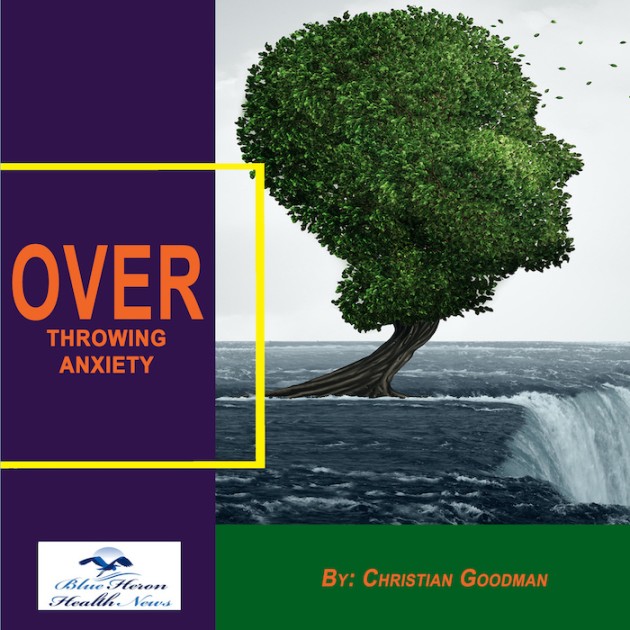
Overthrowing Anxiety™ This eBook includes a complete program to treat anxiety effectively. It guides you to learn the ways to find, understand, and accept the main cause of your anxiety and start using the techniques provided in it to treat the problem.
How can one differentiate between vertigo and dizziness caused by other factors?
Differentiating between vertigo and dizziness caused by other factors can be tricky, but the key lies in the specific symptoms and triggers. Here’s a breakdown:
Vertigo:
- Sensation of Spinning or Movement: Vertigo typically makes you feel like either you or your surroundings are spinning or moving when they are not.
- Triggered by Head Movement: Vertigo often occurs when you change the position of your head, such as turning it or looking up.
- Associated with Nausea: It is frequently accompanied by nausea or vomiting due to the imbalance.
- Duration: Vertigo attacks can last from seconds to minutes and might come in episodes. In some cases, it can persist longer.
- Underlying Causes: It’s commonly linked to problems in the inner ear or the vestibular system (like benign paroxysmal positional vertigo, Meniere’s disease, or vestibular neuritis).
Other Causes of Dizziness:
- Lightheadedness: A feeling of faintness or near fainting, often caused by dehydration, low blood sugar, or standing up too quickly. This type of dizziness is more about feeling weak or like you’re about to pass out.
- Disequilibrium: A general sense of imbalance or unsteadiness, commonly caused by conditions like low blood pressure or neurological issues. It might not involve spinning, but rather difficulty walking or feeling off-balance.
- Diseases/Conditions: Other conditions like anxiety, anemia, or a heart condition can cause dizziness. These may be accompanied by other symptoms such as shortness of breath, chest pain, or increased heart rate.
Key Differences:
- Spinning Sensation: If you feel like you’re spinning or the room is moving, it’s more likely vertigo.
- Triggers: If dizziness happens without head movements or changes in position, it’s less likely to be vertigo and may be caused by low blood pressure, dehydration, or other factors.
- Associated Symptoms: Nausea, vomiting, and hearing loss may indicate vertigo or an inner ear issue. If dizziness is accompanied by chest pain or shortness of breath, it might suggest a cardiovascular issue.
If you’re unsure or the dizziness is severe or persistent, it’s important to consult a healthcare professional for an accurate diagnosis.
Orthostatic hypotension (also known as postural hypotension) is a condition where a person’s blood pressure drops significantly when they stand up from a sitting or lying position. This sudden drop in blood pressure can lead to dizziness, lightheadedness, or even fainting.
Key Symptoms:
- Dizziness or lightheadedness when standing up quickly.
- Blurry vision or feeling faint.
- Weakness or feeling unsteady.
- Fatigue due to reduced blood flow to the brain.
Causes:
- Dehydration: When the body loses more water than it takes in, it can cause weakness, dizziness, and fatigue.
- Blood loss: Significant loss of blood due to an injury or internal bleeding reduces the amount of blood in your body, leading to low blood pressure.
- Heart problems: Issues such as very low heart rate, heart valve problems, or heart attack can prevent your body from adjusting to changes in posture.
- Endocrine problems: Certain hormonal conditions, like underactive thyroid (hypothyroidism), adrenal insufficiency (Addison’s disease), or low blood sugar (hypoglycemia), can affect blood pressure regulation.
- Medications: Some medications, such as those for high blood pressure, diuretics, and certain antidepressants, can cause orthostatic hypotension.
- Nervous system disorders: Conditions like Parkinson’s disease or diabetic neuropathy can affect the autonomic nervous system, leading to issues with blood pressure regulation.
Diagnosis and Treatment:
A doctor may diagnose orthostatic hypotension through a physical exam and by measuring blood pressure while you are lying down, sitting, and standing. Treatment depends on the underlying cause but may include:
- Increasing fluid and salt intake (under medical supervision).
- Wearing compression stockings to improve circulation.
- Medications to raise blood pressure in more severe cases.
- Avoiding sudden position changes, like standing up too quickly.
If you experience symptoms of orthostatic hypotension, it’s important to consult a healthcare professional for an accurate diagnosis and appropriate treatment.
Overthrowing Anxiety™ This eBook includes a complete program to treat anxiety effectively. It guides you to learn the ways to find, understand, and accept the main cause of your anxiety and start using the techniques provided in it to treat the problem.
